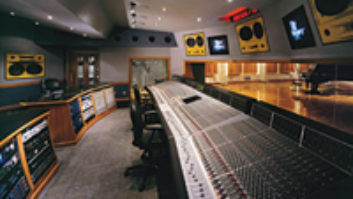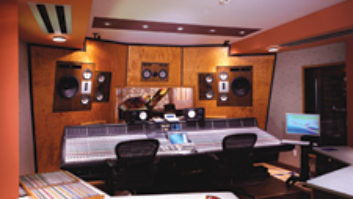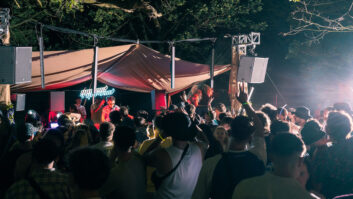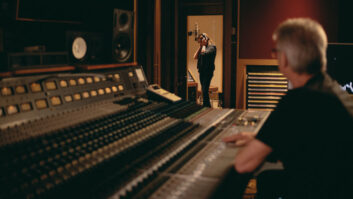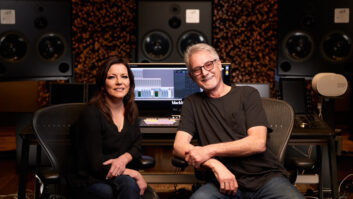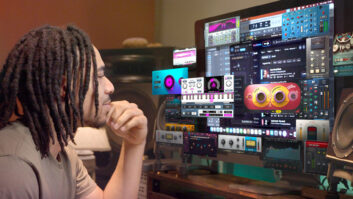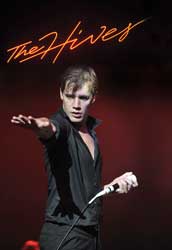
Photos: Steve Jennings
Sweden-based The Hives captivated alt-rock fans when they signed up for a slew of touring gigs with The Strokes and White Stripes in 2001. Since then, they’ve cultivated their own following, attracting legions to their sold-out club dates while touring behind the 2004 Tyrannosauraus Hives album. Last year saw the release of the much-anticipated The Black and White Album. Mix caught up with the blistering foursome when they played at San Francisco’s recently renovated War-field Theater.
Front-of-house engineer Dave Lamb is mixing on a Midas H3000 console, supplementing that with a few choice pieces of outboard: a few Yamaha SPX990s and delay, dbx 160s on everything and a stereo valve comp over the mix. “I put everything through API preamps and then compress the hell out of it,” Lamb adds. “We are not carrying P.A. with us, so for rental we have enough for 110 dBA clean at FOH — always nice to have headroom.
“For mics, Sennheiser looks after us. We have white-capped 935s that look cool and 421s on everything else except inside the kick [Shure Beta 52, Sennheiser 901] and underheads [Neumanns]. Working with The Hives, they’re one of the best bands and crew I’ve ever worked with.”
Zoran “Zok” Malceski is pulling double-duty: monitor engineer and tour manager. He’s mixing on a Yamaha PM5D with API preamps in line with the rig, acting as the bridge between the P.A. and the stage. “All inputs from stage run through the preamps into the production stage box and from the multicores of both FOH and monitors,” Malceski explains. “That is, we use all our own mics, cables, snakes and sub-snakes. This gives us, essentially, uniformity for each show. As we don’t carry our own production, we are often at the mercy of in-house rigs, which vary greatly venue-to-venue in both equipment and condition. Lately, as our shows are getting larger and production is better, these can be considered a little overkill, but they do continue to provide that signal uniformity and thereby make the FOH and monitor positions a little easier to control.”

